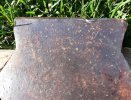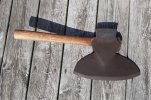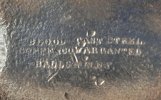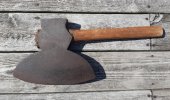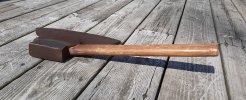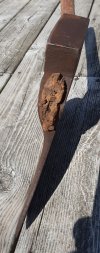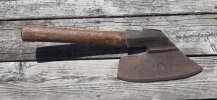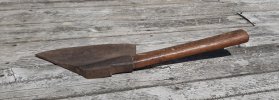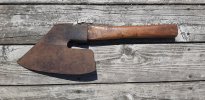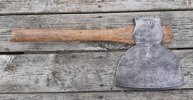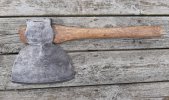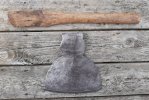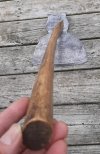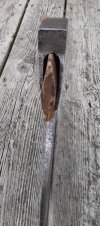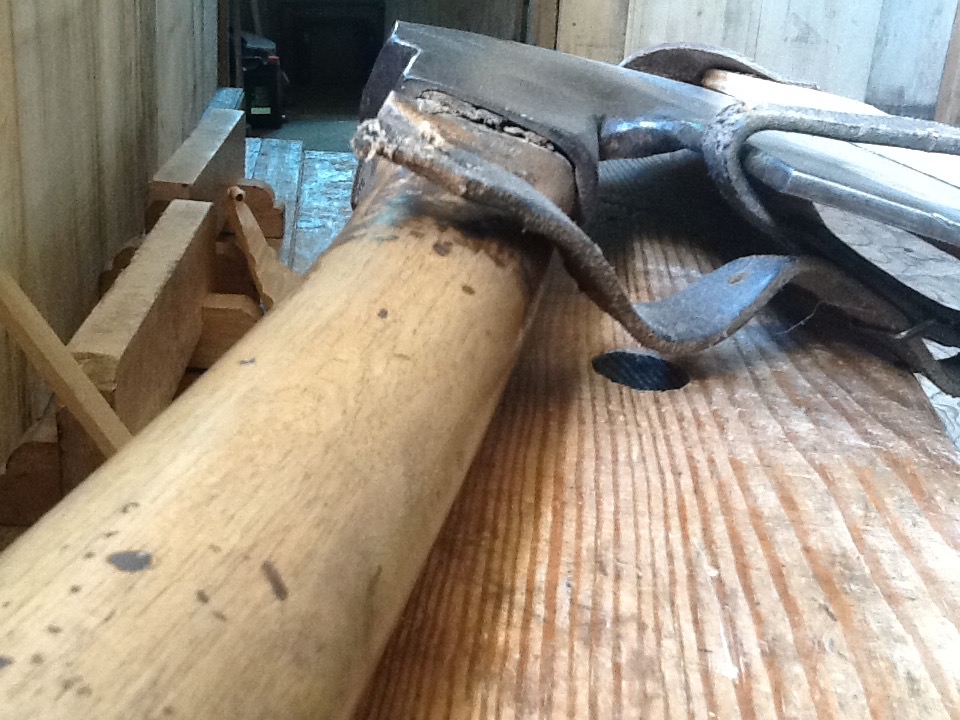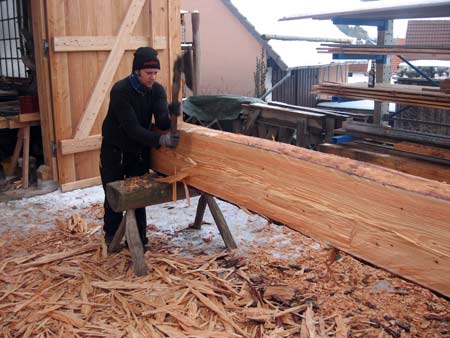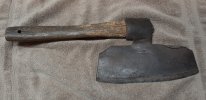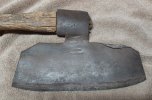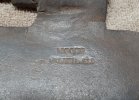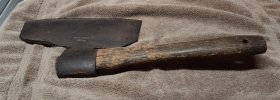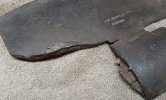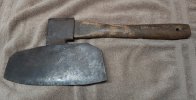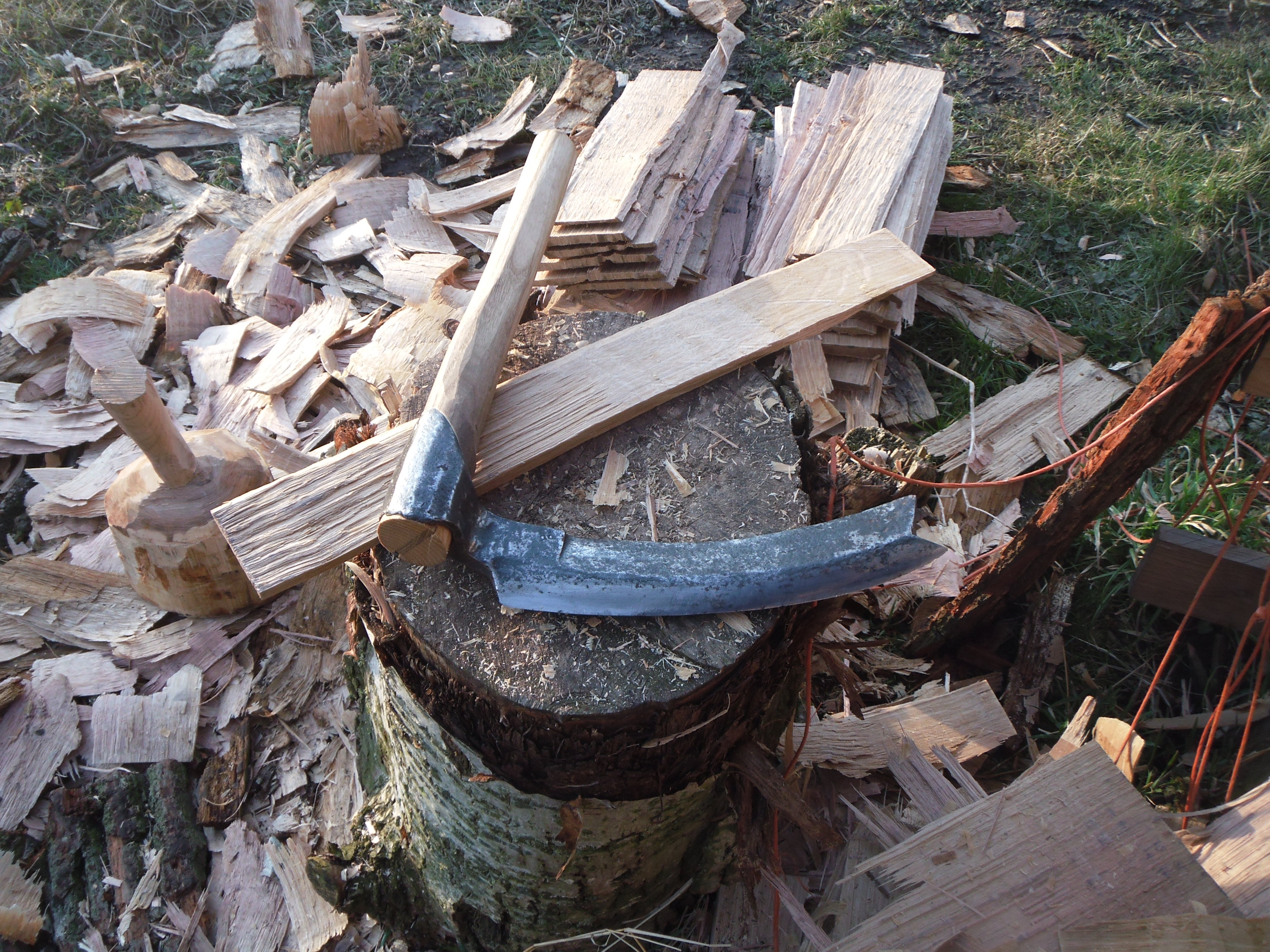the-accumulator
Platinum Member
- Joined
- Jan 24, 2008
- Messages
- 899
In a recent post I showed a Fayette Plumb broad axe (set up righty) with a long haft angled to the right. If I were standing on the ground hewing a log righty, i would want a shorter haft, and, if I were standing atop the log, I wouldn't want the haft angled to the right. So I don't understand this axe.
I also own a Peck broad axe (set up righty) with a long haft that is angled to the left. Not good if you're standing next to the log but maybe okay if you're standing atop the log. Actually, I think it was just hung by someone who didn't have a clue! Or maybe they did?!
Here are photos of the two clamped together with a 2x4 between them so you can compare the designs of the hafts:
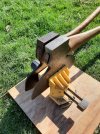
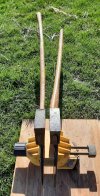
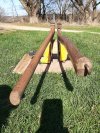
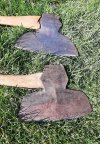
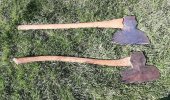
FYI, the Plumb (bottom) haft feels as though it was shaped with a draw knife; the other feels like it's baseball bat!
In this photo, I have added a broad axe that shares space on my axe rack in the machine shed right next to the Peck:
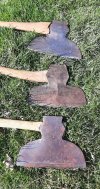
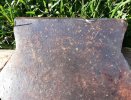
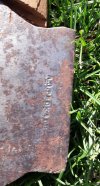
I'm not sure that the logo shows up well in the photo. but it's branded "HUNT". Yes, I've been storing "HUNT" and "PECK" right next to each other without realizing it until now. That and $1.75 will get you a cup of coffee if you're lucky! T-A
I also own a Peck broad axe (set up righty) with a long haft that is angled to the left. Not good if you're standing next to the log but maybe okay if you're standing atop the log. Actually, I think it was just hung by someone who didn't have a clue! Or maybe they did?!
Here are photos of the two clamped together with a 2x4 between them so you can compare the designs of the hafts:





FYI, the Plumb (bottom) haft feels as though it was shaped with a draw knife; the other feels like it's baseball bat!
In this photo, I have added a broad axe that shares space on my axe rack in the machine shed right next to the Peck:



I'm not sure that the logo shows up well in the photo. but it's branded "HUNT". Yes, I've been storing "HUNT" and "PECK" right next to each other without realizing it until now. That and $1.75 will get you a cup of coffee if you're lucky! T-A

